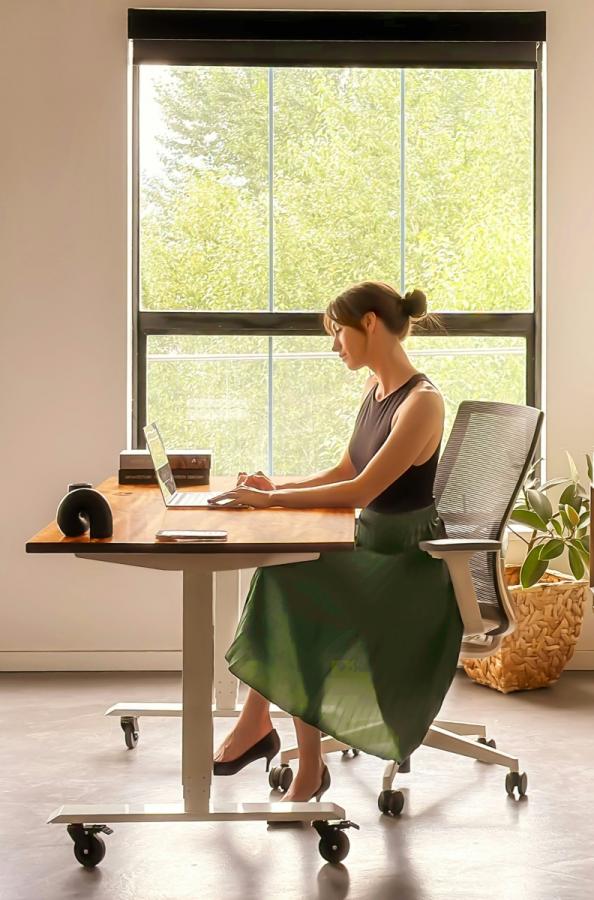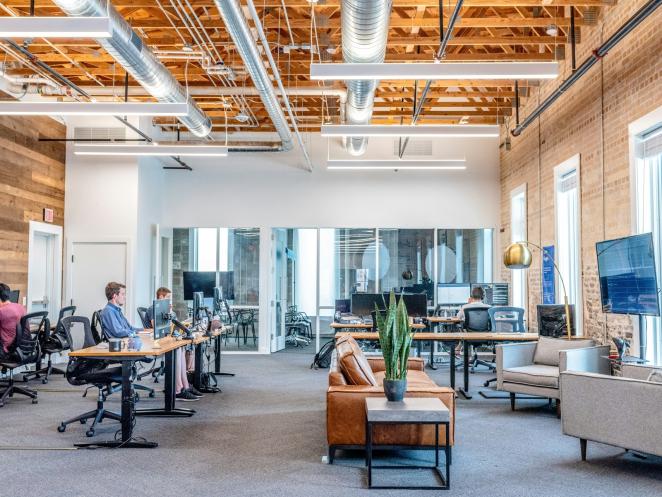The Interreg North Sea project ‘CEO’ (Circular Economy Office) explores how office design and furniture can be made more circular. At the end of February, CEO organized its first stakeholder event, which featured four interactive brainstorming sessions. Participants discussed the following topics: The New Way of Working, Ecodesign, Scaling Up, and Circular Business Models. This article summarizes the discussions on the topic of 'Circular Business Models' (CBM). During this session, we aimed to answer five key questions.
What are possible circular business models?
To begin, participants were asked which business models could help advance circularity in the furniture sector. It quickly became clear that there was already plenty of inspiration for moving toward more circular practices. Here are some of the suggestions:
- More partnerships
- More Design for Disassembly (DfD), where furniture is designed with easy disassembly in mind
- More Second Life Design, where furniture is redesigned with a second life in mind
- Greater use of sustainable materials that contribute to the circular value chain of furniture
- More buy-back programs to encourage reuse and recycling of furniture
- More cleaning and maintenance services to extend the lifespan of furniture
- More Furniture as a Service (FaaS) providers to promote reuse
- Increased attention to modularity in furniture design
- Introduction of circular discounts where residual value is factored into the price
- Commissions on refurbishment to incentivize repair and reuse
Do you already see a shift from ownership to usage?
Overall, participants noted that there is not yet a significant shift in customer demand. Although there is some awareness of long-term costs, office furniture is still typically purchased outright, with a focus on capital expenditure (CAPEX) rather than operational expenditure (OPEX). Leasing or renting furniture is not yet a common practice.

Can ESG and CSRD give circular business models a boost?
The new ESG and CSRD initiatives (Environmental, Social, and Governance and the Corporate Sustainability Reporting Directive) are expected to give circular business models a boost—especially among large companies. These companies will be required to make greater efforts to meet sustainability standards and invest in circular practices. This could help raise awareness around circular approaches. However, the direct impact on SMEs is expected to remain limited for the time being.
What is your impression of collaboration within the value chain?
The interactive session showed that various stakeholders are already experimenting with circular business models. Some shared experiences of partnerships with customers, where materials were returned for reuse. Others explained how a culture of sharing and reuse was being encouraged by focusing more on functionality rather than ownership. Transparency across the entire value chain was highlighted as essential for increasing efficiency. Participants also noted the importance of effective chain coordination to align all actors. Customized work companies were also mentioned—they have significant potential to play a key role in developing and implementing circular practices within the industry due to their high level of flexibility.

How can the impact of circular business models be measured?
Impact measurement includes methods such as carbon footprint analysis, Life Cycle Assessment (LCA), CSRD reporting, and dynamic environmental impact models. All these tools are crucial for assessing both the financial and sustainability aspects of circular business models.
Which models will become the most widely used? That remains to be seen. But one thing is clear: there's plenty of enthusiasm to make real progress in this sector!
On March 20, 2024, Interreg organized the 10th edition of the ‘Europe, Let’s Cooperate’ collaboration platform. Among other activities, participants were given a tour of Circuit Antwerp. We also asked them which action points they considered a priority for scaling up circular office design. Within the theme of ‘Circular Business Models’ (CBM), they highlighted two key priorities: the promotion of partnerships and collaborative initiatives, and the encouragement of innovation, Design for Disassembly, and modular design.
What’s your take? Does this topic interest you? Would you like to help build a circular economy in Flanders—especially in the field of circular office design? Follow the European CEO project (Circular Economy Office): sign up for the CEO newsletter to stay informed about events and initiatives.
